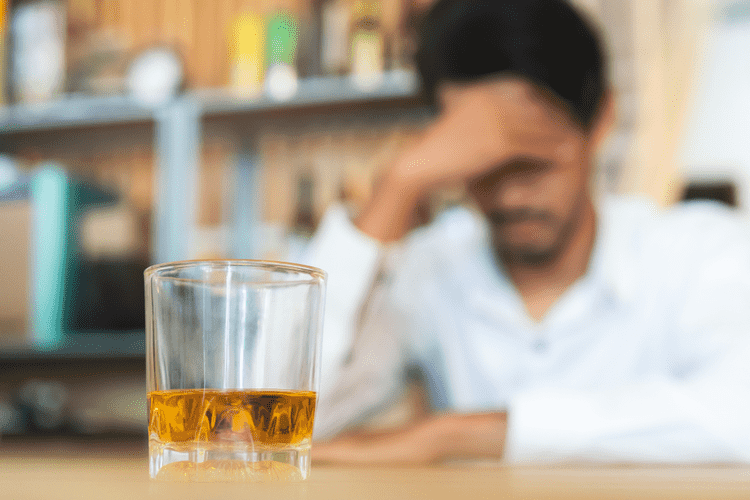People in farming communities are more likely to binge drink (consume alcohol at short-term risky levels) when compared with the general Australian population. The relationship between binge drinking and mental health is deeply interconnected. Alcohol is often used as a coping mechanism for stress, trauma, or emotional pain, but it worsens mental health over time.
Take the First Step Toward Recovery!
You’ll start to feel the effects of alcohol within 5 to 10 minutes of having a drink. Here’s a look at how all that alcohol is impacting the health of Americans over both the short and long term. Parents and teachers can play a meaningful role in shaping youth’s attitudes toward drinking. Parents, in particular, can have either a positive or negative influence.
Are you or your loved one battling mental health and substance use disorders?
Heavy drinking can also lead to high blood pressure, heart disease, and stroke. As far long-term effects of binge drinking as long-term effects, binge drinking can also lead to internal damage, especially if you’re regularly engaging in binge drinking episodes. Large amounts of alcohol consumed over a long period of time can negatively impact the parts of your brain that deal with judgment, balance and coordination. Unlike binge drinking, the problem of alcohol use disorder isn’t measured by a particular number of drinks. Instead, the CDC defines it as a chronic condition, which means it’s a type of illness that’s persisting over a long period of time.
Alcohol Addiction Treatment at 12 South Recovery
- The CDC and National Institute on Alcohol Abuse and Alcoholism (NIAAA) define binge drinking as drinking a large amount of alcohol in a short period.
- Binge drinking represents a dangerous pattern of alcohol consumption that poses significant health risks to millions of Americans.
- These limitations make it hard to know how much to rely on studies that find health risks (or benefits) to alcohol consumption.
- Our treatment programs incorporate various therapeutic modalities, including individual counseling, group therapy, and family support services.
- As one of the largest academic health centers and health sciences campuses in the nation, we are uniquely positioned with renowned experts covering all aspects of health, wellness, science, research and education.
Binge drinking can lead to anti-social, aggressive and violent behaviour. If you think someone might be experiencing alcohol poisoning, even if you have doubts, place them on their side in the recovery position and call 999 for an ambulance. The cost of excessive alcohol use impacts everyone, whether they drink or not. Knowing what counts as one standard drink can help you figure out how much alcohol you drink and whether it would be considered excessive.
If you or someone you know struggles with binge drinking or alcohol intake, don’t hesitate to seek professional help. It’s important to know that once your blood alcohol concentration (BAC) reaches or exceeds 0.08%, you begin to experience significant drug addiction treatment impairments. These include challenges with balance, slower reaction times, and difficulties in speech, vision, and hearing. Reasoning capabilities, memory, and impulse control also become compromised. In the majority of US states, having a blood alcohol concentration (BAC) of 0.08% or higher qualifies you as legally impaired.
- Immediate risks include alcohol poisoning, accidents, impaired judgment, blackouts, and engaging in risky behaviors.
- By understanding the risks and implementing some practical strategies, you can make better choices and avoid the dangers of excessive alcohol consumption.
- As a result, if you feel as if you suffer from a binge drinking problem there are a number of treatment options to choose from.
- Binge drinking is a serious issue with far-reaching consequences, but it’s one that can be addressed.

Read on to learn about the binge drinking effects and why this risky behavior of drinking is not just a “college problem” but a public health concern. This is the equivalent of having 5 drinks for men and 4 drinks for women within a 2-hour period. However, many teens are smaller in size than most adults, and it may take only 3-4 drinks for boys and 3 drinks for girls to reach a BAC of .08%. Additionally, setting clear boundaries for yourself when it comes to alcohol consumption can reduce the temptation to binge drink.
International Surveys of Adolescent Binge-Drinking Prevalence
Find out more about standard drinks on the Department of Health, Disability and Ageing website. Binge drinking is when you drink a lot of alcohol in one session to get drunk. Increasing alcohol prices or limiting sales hours to reduce accessibility. For more information about alcohol and cancer, please visit the National Cancer Institute’s webpage “Alcohol and Cancer Risk” (last accessed June 6, 2024). Recent research has shown that many people may inherit a tendency toward alcoholism. Alcohol abuse may not always include a very strong craving for alcohol, loss of control, or physical dependence.
How Common is Binge Drinking?
When alcohol is consumed while an individual’s brain is still developing, it can alter their brain in a negative way. This frequently causes a drop in the drinker’s IQ, leading to memory impairment and other cognitive problems that will plague their learning ability and social skills. The results of this will become even more pronounced as the person ages, especially if they continue to binge drink.
- While binging is less likely to leave a person in poverty in the way that alcoholism does, it is still a serious loss of funds that could have been put toward other ventures.
- More information about alcohol and cancer risk is available in the Surgeon General’s advisory.
- Taking the first step toward healing can be challenging, but you’re not alone.
- Changing the labels as suggested by the Surgeon General will require congressional action that may never happen.
- Research has demonstrated that long-term heavy drinking weakens the heart muscle, causing cardiomyopathy.
Alcohol Addiction

About 90 percent of the alcohol in your blood is broken down by the liver. Get articles and stories about health, wellness, medicine, science and education delivered right to your inbox from the experts at Ohio State. All of the https://dfolalitpur.gov.np/drug-detoxification-wikipedia/ information on this page has been reviewed and verified by a certified addiction professional. Binge drinking can worsen anxiety and depression, affect memory and cognitive function, and lead to mood disorders. Alcohol withdrawal management – appropriate processes for the management of alcohol withdrawal.
Understanding excessive drinking
Lastly, people who start drinking earlier in life have a higher risk of using alcohol excessively or developing alcohol use disorder later in life. Alcohol use disorder is a pattern of alcohol use that involves problems controlling your drinking, being preoccupied with alcohol or continuing to use alcohol even when it causes problems. This disorder also involves having to drink more to get the same effect or having withdrawal symptoms when you rapidly decrease or stop drinking. Alcohol use disorder includes a level of drinking that’s sometimes called alcoholism. The term fetal alcohol spectrum disorder (FASD) describes a range of adverse effects that may occur following alcohol exposure during the prenatal period. These effects include physical, mental, behavioural and learning disabilities, and may have lifelong implications.
